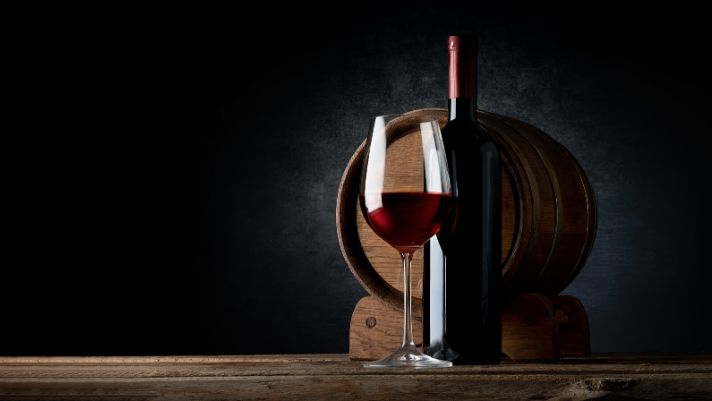The wine creation process is wonderful and diverse. Depending on red or white, the fermentation process, the aging process, and so much more, the wine that comes in your bottle has gone through a varied number of steps. The aging process, in particular, is quite different depending on the winemaker and the type of wine. It can age for months or for years, it can sit in stainless steel barrels or oak barrels, and more. Today, we’ll discuss the following question: what’s the difference between oaked wine and unoaked wines?
Oak Barreling Process
Many wines benefit from coming into contact with oak. An oak barrel can enhance the color of the wine, soften flavors, round out flavors, and impart some unique characteristics of its own. These barrels don’t discriminate on red or white wines, and many wines do spend time in oak barrels to even out their flavors.
Think about oak as your favorite seasoning in the kitchen—salt, pepper, oregano, paprika, whatever you choose. Now, think about how too much of said seasoning can overpower the dish, or it can enhance the flavors already there. Too much paprika will overpower your seafood. Too little salt, and the natural flavors of your dish will seem dull and unseen.
This is the same with oak in the aging process. Too much oak, and you’ll get the buttery flavor that so many people put hand-in-hand with Chardonnay. But too little oak, and you may not get the wonderful richness in your Reserva or Gran Reserva wine. These bottles must spend one to two years in oak, and without it, you would not get that tannin-full wine.
How to Recognize an Oaked Wine
When a wine sits in oak to age, the oak’s flavors (or phenols) will seep into the wine’s flavors and color. For example, let’s think back to Chardonnay. An unoaked Chardonnay will set in a stainless-steel barrel. These steel barrels won’t impart any of its own flavors, which will leave the Chardonnay with a lighter body and higher acidity. An oaked Chardonnay, however, will become fuller-bodied and a darker yellow the longer it sits in oak.
The flavors of an oaked versus an unoaked wine will vary depending on the grapes chosen. However, when it comes to an oaked wine, the flavor profile of the bottle will match the wood of the barrel. There are three factors of an oaked wine that will pass on to the wine itself:
- Wood Type
There are different wood types used to build oak barrels, and each wood features different flavor profiles. Typical barrel woods are American, Hungarian, or French. French oak, for example, passes on earthy flavors like roasted coffee and savory spices. American oak, on the other hand, is lighter and passes on vanilla and sweet spices. Depending on the type of wine, a specific wood barrel will be more appropriate to enhance the flavor.
- Seasoning
The seasoning of a barrel does not refer to the spices found in your kitchen cabinet. Rather, it refers to the process of drying the barrel to reduce the moisture in the wood before it’s sent off to become a barrel. Wood is seasoned for 18 months or longer so that the tannins in the dried wood interact with the tannins of the grapes.
- Toasting
The toasting process affects wine the way heat affects food. When a barrel has a faster “toast” with higher temperatures, then the wood will impart a sweeter flavor on the wine. When a barrel is toasted slowly, the characteristics aren’t as obvious.
All that said, there’s quite a difference in the flavors you’ll notice in a steel-aged wine and an oak-aged wine. The easiest way to understand their differing profiles is by grabbing two bottles of Chardonnay—oaked and unoaked. Pour a little bit of each into two glasses, and note the difference in their flavors and in their body. There’s no right or wrong, only what tastes best to your tongue.
For all your wine needs, as always, turn to Wines ‘Til Sold Out. As the best place online for high-quality white wines and delicious reds, we’ll make sure you enjoy every bottle you open. Order for wine delivery now, and taste the difference between oaked and unoaked wines.



